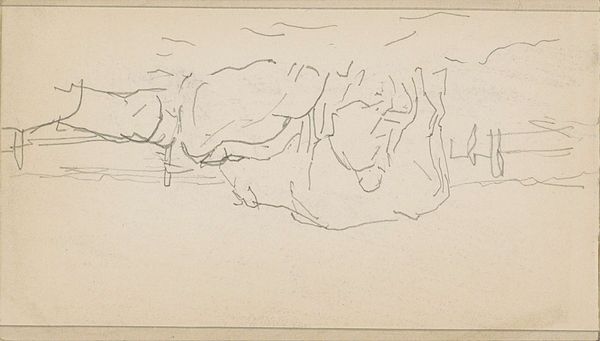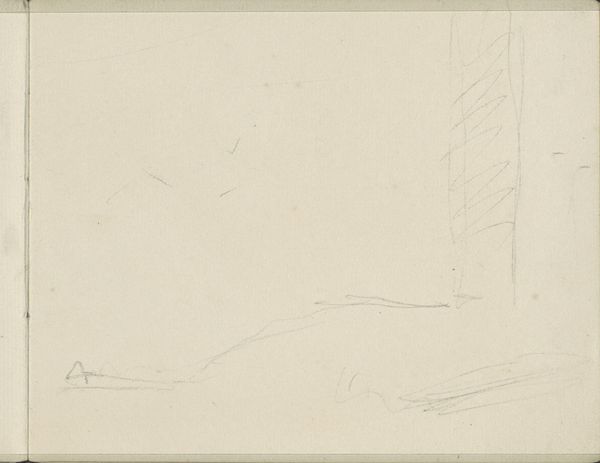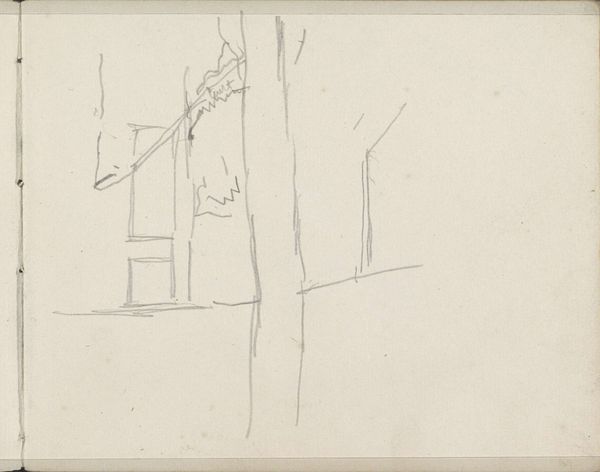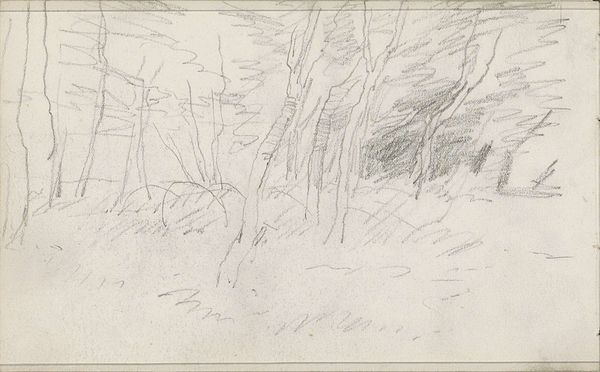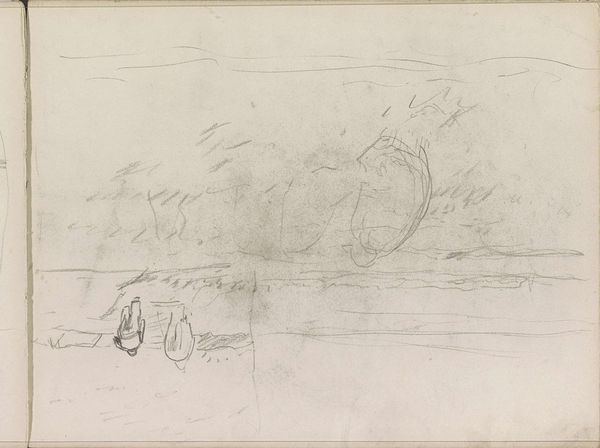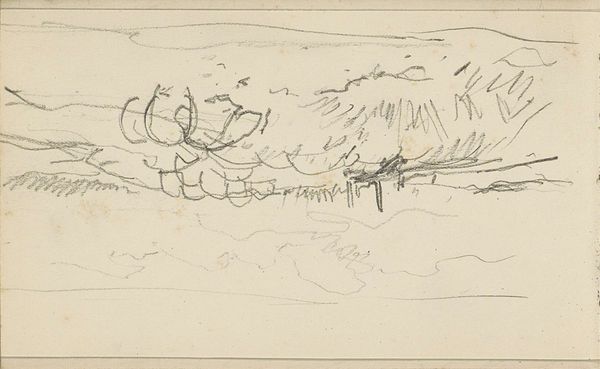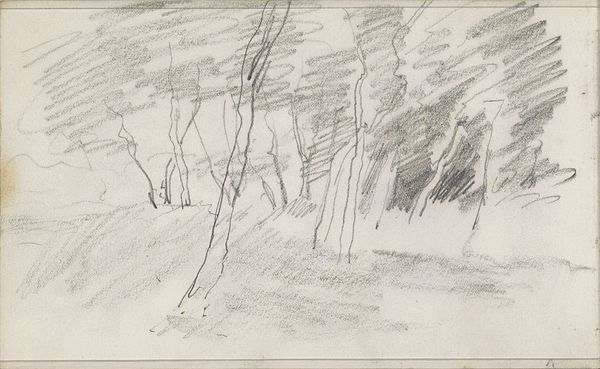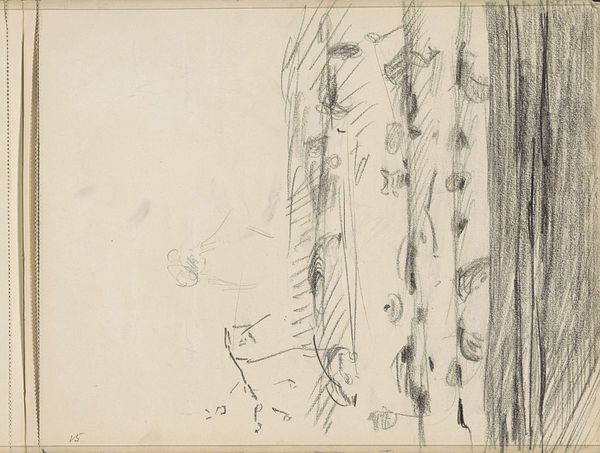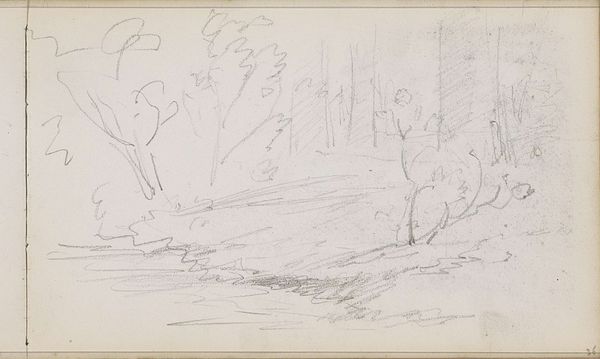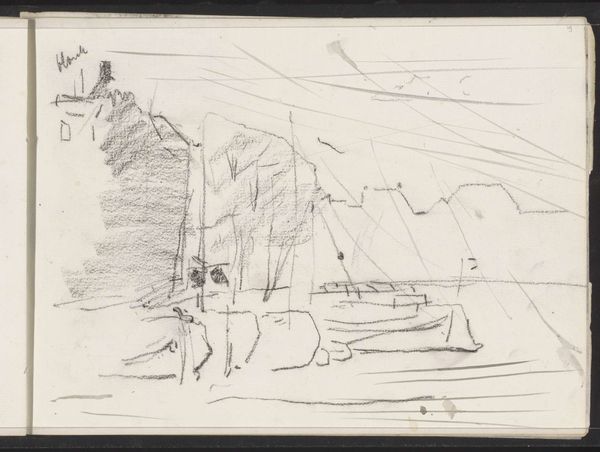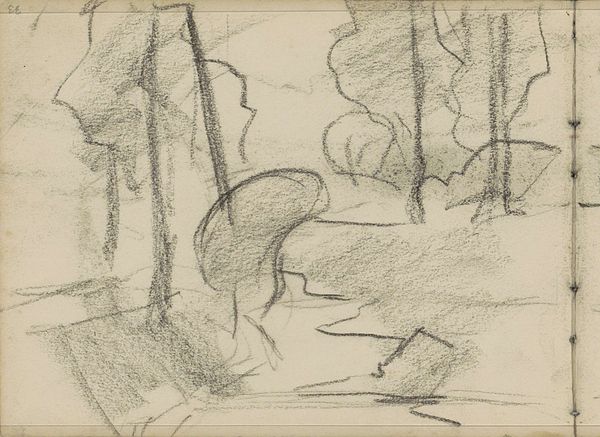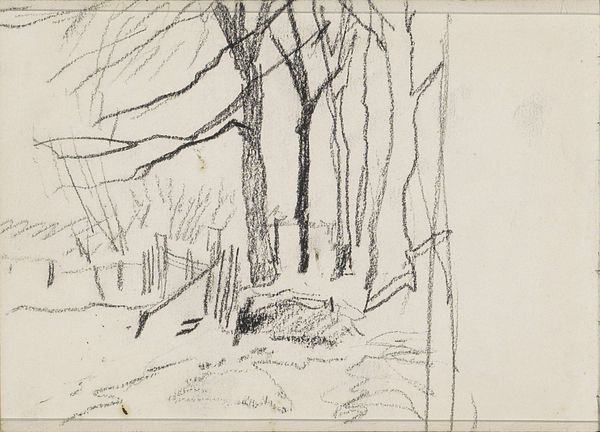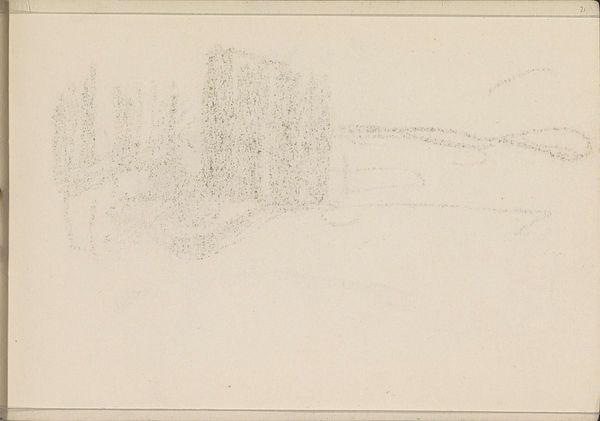
drawing, pencil
#
tree
#
drawing
#
impressionism
#
pencil sketch
#
landscape
#
form
#
pencil
#
abstraction
#
line
Copyright: Rijks Museum: Open Domain
Editor: We’re looking at "Animal Between Two Trees," a pencil drawing by Anton Mauve, made sometime between 1848 and 1888. It’s a very sparse landscape; what strikes me is how little detail there is, but somehow the suggestion of form is really strong. How do you interpret this work? Curator: It’s interesting you use the word "suggestion." I think Mauve is deliberately highlighting the precarity of our relationship with the natural world here. The indistinct lines force us to confront the fleeting nature of our perceptions, not just of the animal figure, but of the whole landscape. What might that animal symbolize, given its vulnerability in the face of encroaching industrialization? Editor: It almost looks like the animal is hiding or seeking shelter. So, is it a commentary on habitat loss perhaps? Curator: Exactly. Consider the historical context – the late 19th century was a period of rapid urban growth and environmental change. Mauve, and artists of his milieu, were very attuned to the displacement caused by these shifts. Think about the people similarly displaced. Does the animal's fragility mirror other forms of social vulnerability? Editor: I hadn't considered the social vulnerability aspect. So, it is not just about the animal in the landscape but it's symbolic of larger societal issues of displacement. Curator: Precisely. This work invites us to reflect on how industrial progress disproportionately affects vulnerable populations, humans and non-humans alike. It's a quietly powerful critique. Editor: I see it now; the sparseness adds to that sense of fragility and the way everything is interconnected. Thanks, I now understand there's so much more to this seemingly simple sketch. Curator: Absolutely. Art is a reflection of society. Examining this art helps us reflect on present-day issues.
Comments
No comments
Be the first to comment and join the conversation on the ultimate creative platform.
